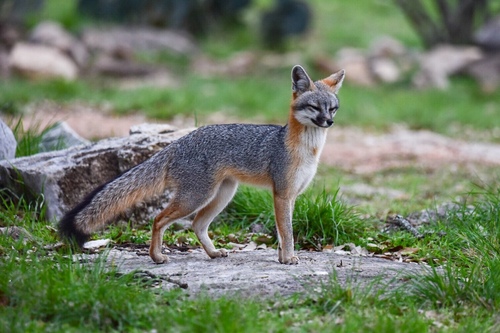
Gray Fox
The gray fox (Urocyon cinereoargenteus) boasts a unique skill among canids: tree climbing, thanks to its retractile claws. This adaptable omnivore thrives in forests and suburban habitats, playing a vital ecological role in controlling small prey populations.
6 years
Lifespan
3.2 - 6.4 kg
Weight
Length: 89 - 105 cm; Height: 30 - 40 cm
Size
Grey, Red, Black, White
Color
10 months
Age of Sexual Maturity
2-6 weeks
Age of Weaning
28 mph
Top Speed
Least Concern
Conservation Status
Stable
Population Trend
Distribution Range of the Gray Fox
Urocyon cinereoargenteus, commonly known as the Gray Fox, is native to the Americas. Its geographical distribution extends from southern Canada, through much of the United States (excluding some northern regions), and continues through Mexico and Central America, reaching as far south as northern South America, particularly Venezuela and Colombia.
Gray Fox's Habitat
Environmental Conditions
The Gray Fox predominantly occupies deciduous and mixed forests, although it is also commonly found in grasslands, scrublands, and brush areas. It prefers environments with dense vegetation cover, which provides both food resources and shelter from predators. The climate in its range varies significantly, from temperate regions in Canada and the northern United States to tropical areas in Central America.
Ecological Niche
As an omnivorous mammal, the Gray Fox thrives in diverse habitats by feeding on a varied diet that includes small mammals, birds, fruits, and insects. Its climbing abilities allow it to access arboreal food sources and evade predators, thus occupying a unique niche among North American canids. This adaptability to different environments and food sources is key to its wide distribution.
Copyright @ Nature Style Limited. All Rights Reserved.
 English
English